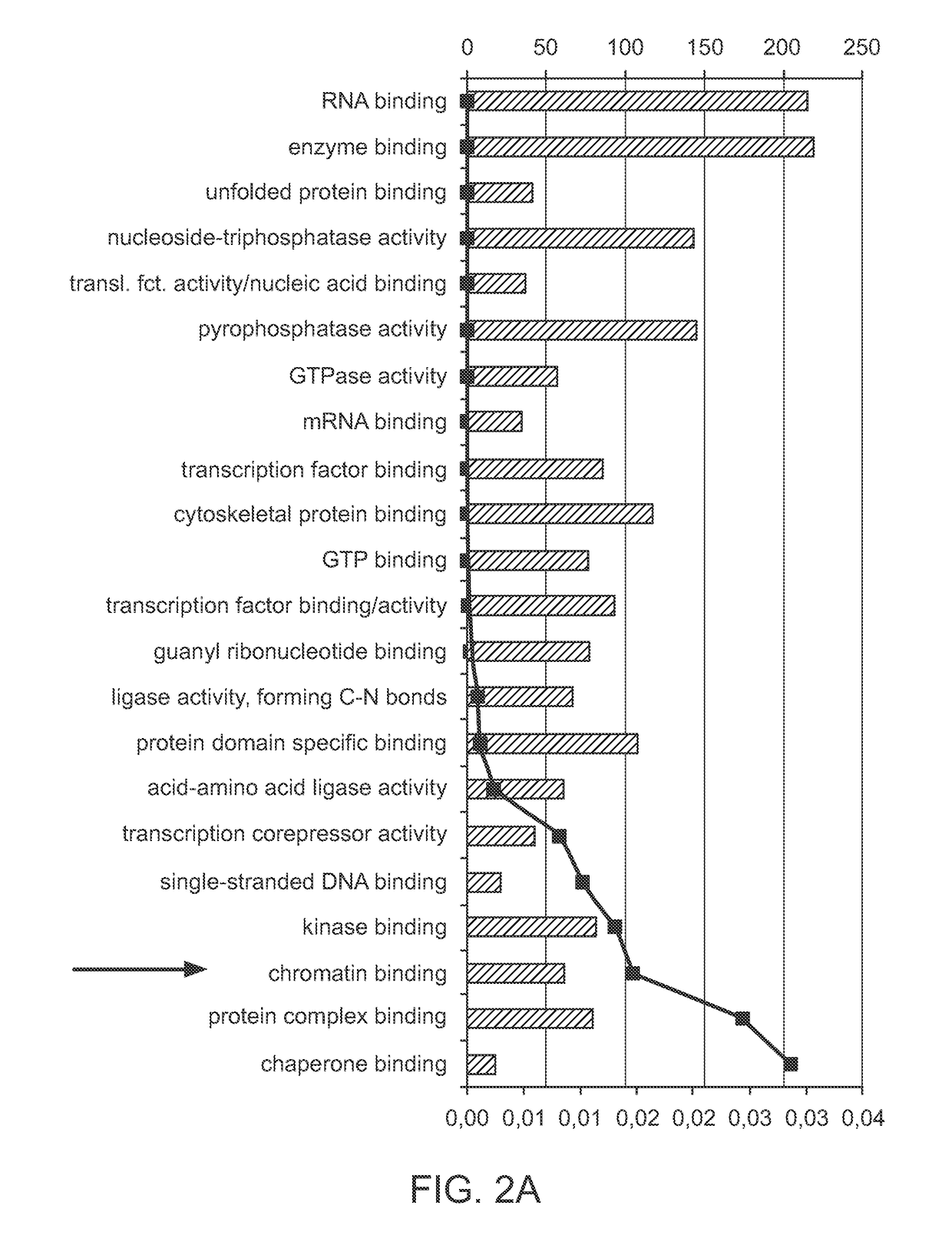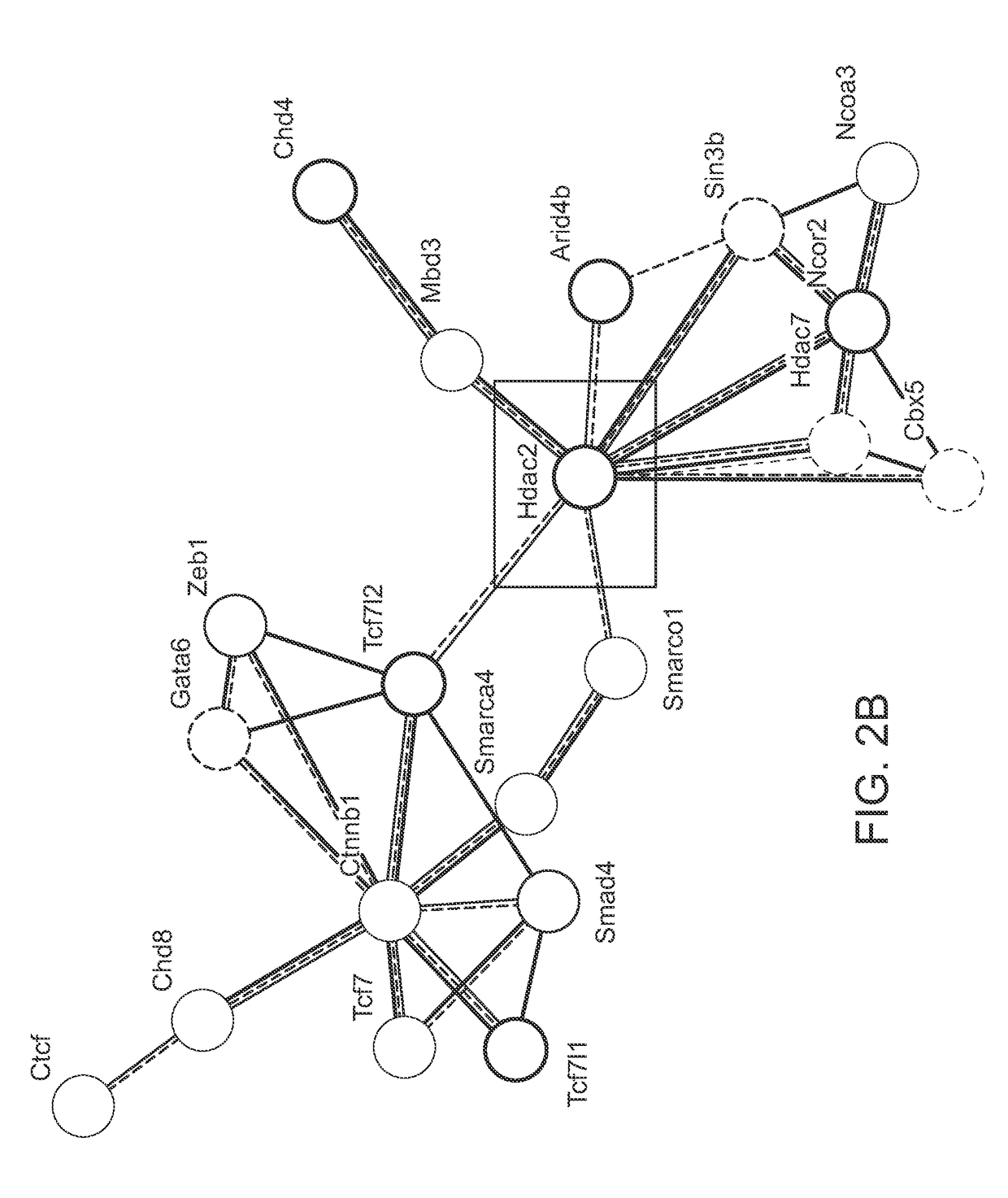Inhibition of histone methyltransferase for cardiac reprogramming
a histone methyltransferase and cardiac reprogramming technology, applied in the field of cardiology, can solve the problems of cardiac fibroblasts and extracellular matrix proteins accumulating disproportionately and excessively to form scar tissue, mechanical stiffness, cardiac hypertrophy, etc., and achieves the effect of increasing the efficiency of conversion to cardiac myocytes and increasing the reprogramming efficiency
- Summary
- Abstract
- Description
- Claims
- Application Information
AI Technical Summary
Benefits of technology
Problems solved by technology
Method used
Image
Examples
example 1
Mediated Reprogramming of Cardiac Fibroblasts
[0096]Mouse cardiac fibroblasts were transfected with specific combinations of distinct microRNAs significant, for example 50 nm each of mir-1, mir-133, mir-208, and mir-499, to cardiac and / or muscle tissue. For all the following methods, the miRNA combination used included miRNAs mir-1, mir-133, mir-208, and mir-499. Quantitative real-time PCR (qRT-PCR) and immunocytochemistry (ICC) were employed to assess a switch in gene expression as early as 3 days following transfection. These techniques make use of specific primers (qRT-PCR) and antibodies (ICC) to detect the expression / upregulation of cardiac differentiation markers. Such markers include MADS box transcription enhancer factor 2, polypeptide C (MEF2C), NK2 transcription factor related, locus 5 (NKX2.5), GATA binding protein 4 (GATA4), heart and neural crest derivatives expressed 2 (HAND2), ISL1 transcription factor, LIM homeodomain (ISL1), troponin I type 3 (cardiac) (TNNI3). FIG. ...
example 2
Modification in Cardiac Reprogramming
[0097]Comparison of gene expression on fibroblasts converted to cardiomyocytes was performed to identify classes or types of genes that were critical for cardiac reprogramming. Microarray analysis was performed using standard tools known in the art. FIG. 2A shows the results of the global gene expression analysis in miR reprogrammed cardiac fibroblasts. Gene affiliation analysis led to the identification of 22 significant terms for molecular function of genes found changed in microarray 9 days post miR transfection. These results showed that 62 of these genes affect chromatin binding. FIG. 2B shows a graphic representation clustering the gene enrichment, gene affiliation and binding information from the microarray analysis, which indicated that histone deacetylases (HDACs, such as HDAC2) play a central role in miR-mediated reprogramming for converting fibroblasts into cardiomyocytes.
[0098]Subsequent analysis of histone deacetylase gene expression...
example 3
ethyltransferases in Cardiac Reprogramming
[0100]Fibroblasts transfected with cardiac reprogramming miRNAs or control non-targeting miRNAs (NegmiR) were also treated with different HDAC inhibitors. Gene expression of many histone methyltransferases were determined using qPCR, for example, Prmt6, Dnmt3b, Dnmt1, Suv39h1, Mll5, Ehmt1, Smyd3, Prmt2, Prmt1, Prmt5, Mll3, Ehmt2, Carm1, Prmt3, Prmt8, Dot1L, and Smyd1. FIG. 4A shows that histone methyltransferases have an altered gene expression profile in miR treated cardiac fibroblasts.
[0101]Comparison of all the gene expression data for cardiac markers Hand2, Ets2, and Gata4 at 3 days after transfection (FIG. 4B, left) and 6 days after transfection (FIG. 4B right) showed that histone methyltransferase inhibition plays a role in miR mediated cardiac reprogramming. The circled datapoints represent histone methyltransferases and demonstrate that their expression and activity plays a critical role in cardiac reprogramming.
[0102]Additional expe...
PUM
| Property | Measurement | Unit |
|---|---|---|
| mechanical stiffness | aaaaa | aaaaa |
| composition | aaaaa | aaaaa |
| volume | aaaaa | aaaaa |
Abstract
Description
Claims
Application Information
 Login to View More
Login to View More - R&D
- Intellectual Property
- Life Sciences
- Materials
- Tech Scout
- Unparalleled Data Quality
- Higher Quality Content
- 60% Fewer Hallucinations
Browse by: Latest US Patents, China's latest patents, Technical Efficacy Thesaurus, Application Domain, Technology Topic, Popular Technical Reports.
© 2025 PatSnap. All rights reserved.Legal|Privacy policy|Modern Slavery Act Transparency Statement|Sitemap|About US| Contact US: help@patsnap.com



